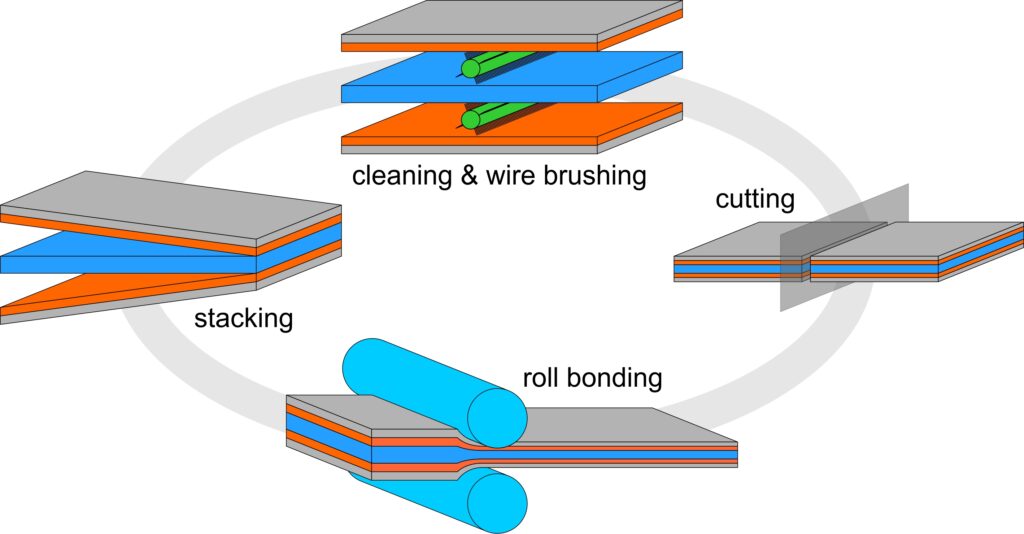Understanding interfacial effects regarding mechanical properties and microstructure of different ARB processes laminated metallic composites
Subject area:
Nanostructured materials
Responsible Employees:
Prof. Dr.-Ing. Heinz Werner Höppel
Moritz Kuglstatter (M. Sc.)

Composite materials are necessary in many applications due to the ability to fulfill requirements of different kind by combining different material classes. Nevertheless, even within a material class it is possible to combine for example metals with very different properties pursuing the goal to improve the composite properties beyond existing boundaries e. g. strength, fatigue life or electrical conductivity. Moreover, it is possible to tailor material properties to the engineering demands.
The accumulative roll bonding (ARB) process gives the opportunity to produce heterogeneous layered structures at laboratory as well as at industrial scale. The properties of these so-called laminated metal composites (LMC) can be tailored by changing the LMC architecture and the size of the microstructure. Sophisticated combination of different metallic elements or alloys leads to LMCs with high electrical conductivity while their thermal properties outperform conventional materials. Furthermore, it is possible to manufacture materials with extended fatigue life and damage tolerance while obtaining high strength. The improved material properties can lead to material savings or performance improvement in several use cases.
Different LMCs will be produced within this project while the constituents have a cubic face centered (fcc, e. g. Aluminum or Copper), cubic body centered (bcc, e. g. Iron or Niobium) or hexagonal closed packed structure (hcp, e. g. Titanium or Zinc). The materials have different material properties as well in the beginning as during and after the ARB process. This will lead to some constraints at the interface, which was reported as an influence on overall properties and microstructure of the LMC. The focus on this research project lies on the generation of a deeper understanding on interfacial related effects, the development of LMC properties during ARB processing and the systematic investigation of parameters, which are of mayor importance regarding the interphase.